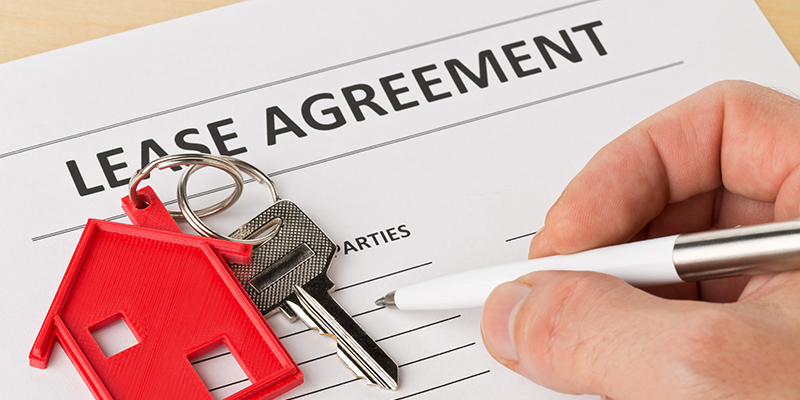Being a landlord involves a lot of work — specifically, paperwork. To be a successful landlord, you must prepare the most important renting documents ahead of time.
Top Renting Documents All Landlords Should Have
There is more to being a landlord than just collecting rent from your tenant. It involves quite a bit of legwork as well as paperwork. And while it is always best to have a property manager or lawyer help you draft all of the documents, it is equally essential to understand the purpose of each one.
Here are the documents needed for apartment renting.
1. Rental Application Form
A rental application form is a form that prospective tenants complete. This form gives the landlord an idea of each candidate’s character, history, and other important information. Prospective tenants fill out the form with their personal details and answer questions designed to screen them.
Landlords must provide the same rental forms to every prospective tenant. Failure to do so may be seen as a form of discrimination and noncompliance with the Fair Housing Act. It is also worth noting that states usually have their own Fair Housing laws. For instance, in California, landlords can’t ask prospective tenants about their citizenship or immigration status.
2. Tenant Screening Documents
 While the rental application form serves as the first screening line, landlords must conduct a more in-depth screening process. Screening is critical because it helps landlords get high-quality tenants.
While the rental application form serves as the first screening line, landlords must conduct a more in-depth screening process. Screening is critical because it helps landlords get high-quality tenants.
Some of the screening documents you will need include the following:
- A list of pre-screening questions to ask prospective tenants
- A list of reference questions to ask previous landlords and employers
- Criminal background reports
- Credit checks
Landlords should apply a consistent and uniform screening process for all prospective tenants. Again, this is to avoid problems with Fair Housing laws.
3. Tenant Acceptance and Rejection Letter
Once you have gone through the entire screening process, you will naturally arrive at a decision. This is where the acceptance and rejection letters come in. You’ll need to let the selected tenant know that you’ve accepted their application. To do that, sending a formal letter that you can keep as documentation is best. The letter should also include the following steps the tenant should take.
It is important to send rejected applicants a letter informing them that their application has been denied. This way, they are not left in limbo. Remember to maintain a professional yet friendly tone when drafting a rejection letter.
4. Rental or Lease Agreement
When discussing rental documents, leaving out your rental or lease agreement is impossiblerental or lease agreement. This agreement outlines the legal terms and conditions between a landlord and their tenant. It includes everything — from rent fees and schedules to policies and termination clauses. Rental agreements not only dictate tenants’ obligations but also protect the landlord in case of a lawsuit.
5. Co-signer Agreement
A co-signer agreement comes in handy if a tenant still needs an extensive credit or rental history. The tenant can get a co-signer on their lease, and this agreement serves as a legal document cementing that relationship and obligation. If the tenant stops paying their rent, the co-signer is held legally responsible.
Co-signer agreements are beneficial when renting to younger tenants. This is great for rental properties located in college towns or areas with a lot of young renters.
6. Rental Inspection Report
Landlords will want to keep their rental property in pristine condition. But, property damage can and does happen throughout a tenancy. So, it is imporessentialave proper documentation of the property’s condition before and after you’re renting to a tenant. This is where a rental inspection report comes in.
Prior to letting a tenant move in, landlords should conduct a walkthrough of the unit with the tenant. Of the many landlord forms, this report essentially acts as a checklist. Take dated photos of the unit and point out any existing damage. Then, when the tenant moves out, you can use this report as a reference when performing a move-out inspection.
Having a thoroughly documented inspection report will help settle disputes about property damage should they arise. It can also serve as supporting evidence in case of legal action.
7. Notice to Enter
 As a landlord, there will come a time when you will need to enter the rental property. You might need to perform a routine inspection of the property, conduct maintenance or repairs, or carry out safety inspections. Whatever the case may be, you will need to notify your tenant of your entry.
As a landlord, there will come a time when you will need to enter the rental property. You might need to perform a routine inspection of the property, conduct maintenance or repairs, or carry out safety inspections. Whatever the case may be, you will need to notify your tenant of your entry.
In a lot of states, landlords are legally required to provide tenants written notice to enter at least 24 hours prior. But, even if you live in a state that doesn’t require it, it is common practice to provide notice anyway. Your tenant will surely appreciate it. However, it is worth noting that emergency situations don’t usually require notice.
8. Notice to Pay Rent
A Notice to Pay Rent is a written letter that a landlord sends to a tenant when the latter has overdue rent. This rent document is also known as a Late Rent Notice or a Past Due Rent Notice.
The notice usually includes the amount of rent due and any late fees, as well as a request to settle the balance by a given date. It also consists of the rental property address, the name of the tenant, and the name of the landlord. More often than not, landlords send this notice before beginning the eviction process.
9. Lease Renewal Letter
When you have a high-quality tenant, once the agreement’s up, your first instinct is to offer a renewal of the lease. To do that, you will need to send a lease renewal letter.
This letter should detail the date of the notice, the termination date of the current lease, the length of the lease renewal, and the rent amount for the new agreement. You should also include a deadline for when the tenant must send their response. Among all the rent documents, this is perhaps the one that landlords most likely want to send.
10. Lease Non-Renewal Notice
On the other hand, if you don’t wish to renew a tenant’s lease, you will need to draft a lease non-renewal notice. At its core, this letter lets the tenant know that you want them out of the property once the current lease expires. This usually comes in handy when you have a bad tenant. Keep in mind that there may be legal requirements as to how much notice you must give tenants of non-renewal.
11. Security Deposit Return Letter
Another one of the most integral renting documents is the security deposit return letter. This letter includes the amount you collected as a security deposit, the address of the rental property, any amount you deducted, and the date the deposit was returned to the tenant. It should also outline the reason/s for the deductions. Many states also have laws requiring landlords to return the security deposit by a certain time.
 12. Eviction Notice
12. Eviction Notice
One document that all landlords hope never to use is the eviction notice. This document is what you send to a tenant that you have decided to evict for whatever valid reason. Most of the time, it is because the tenant has violated the terms of the lease, such as nonpayment of rent. Before starting the eviction process, tenants must be informed.
Professional Assistance
Renting documents are crucial tools that every landlord should have in their arsenal. And while there are templates easily searchable online, it is always best to ask a lawyer or property manager to help you draft these documents.
Are you in need of a property management company? Start looking for the best one in your area today using our online directory!
RELATED ARTICLES:
- When Tenants Move Out: What Should Landlords Do?
- Late Rent: Creating Late Rent Notices And Assessing Fees
- Tenant Turnover Cost: It’s Costlier Than You Think




 Company
Company